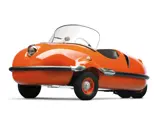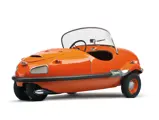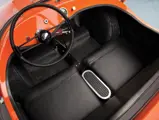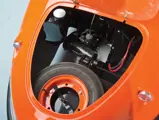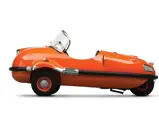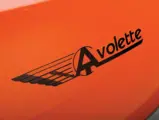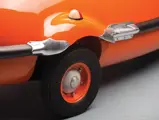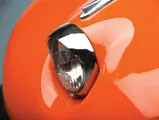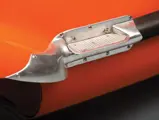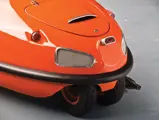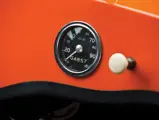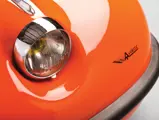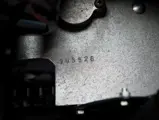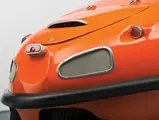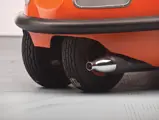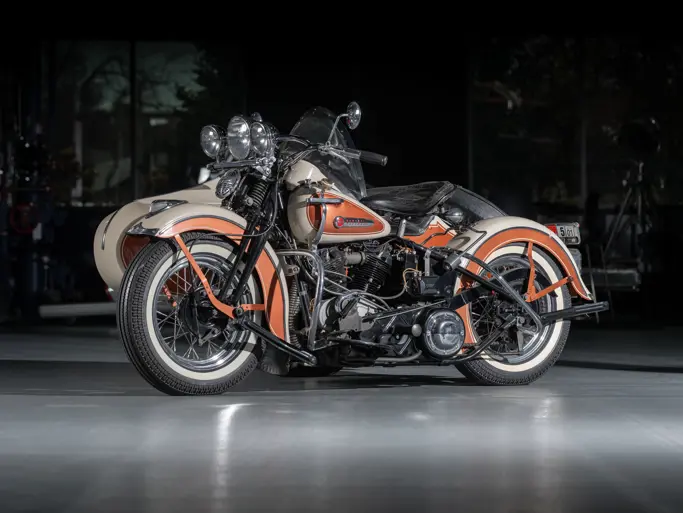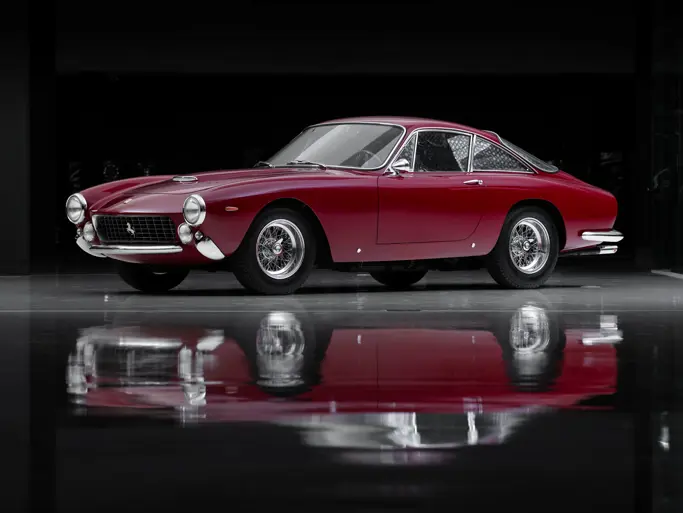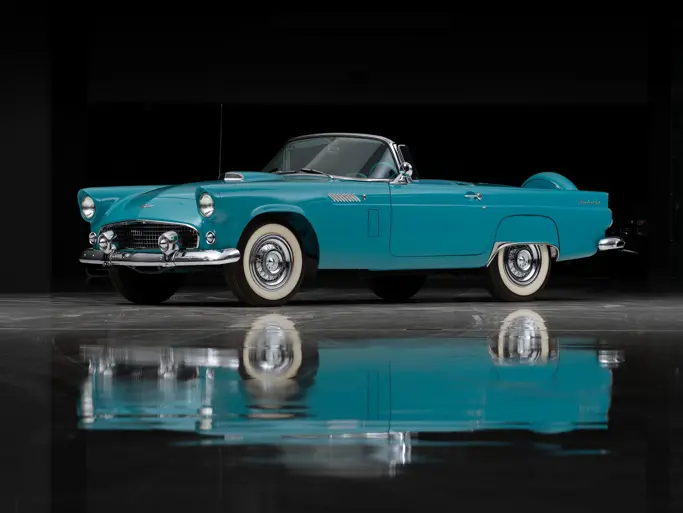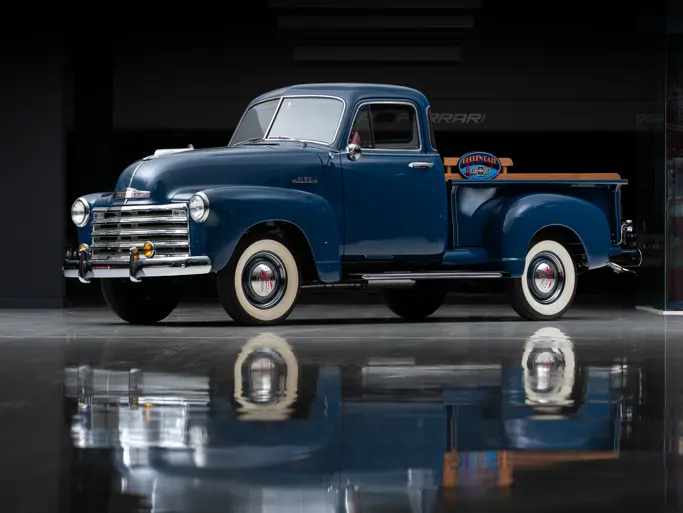The Bruce Weiner Microcar Museum
1956 Avolette Record Deluxe
{{lr.item.text}}
$74,750 USD | Sold
 | Madison, Georgia
| Madison, Georgia
{{internetCurrentBid}}
{{internetTimeLeft}}

The only example in existence of the most powerful Avolette built.
SPECIFICATIONS
Manufacturer: Sté. Air Tourist
Origin: Paris, France
Production: 30
Motor: Maico 1-cyl, 2-stroke
Displacement: 250 cc
Power: 14 hp
Length: 8 ft.
Identification No. 8
Egon Brütsch, the colorful promoter of fiberglass construction, showed his Brütsch 200 prototype at the Paris Salon of 1954. He impressed a number of people and sold several licenses to build his cars. The license for France went to the Société Air Tourist, headed by Jean Avot, who had the French rights for the American Cessna airplanes.
The French car first appeared as the Brütsch-Avolette at the 1955 Paris Show. It was essentially the Brütsch 200, still with the German chrome script on the nose, with its twin faired-in headlamps, and with merely a large “Avolette” decal under the bumper and portholes in the tail. It had a 175-cubic centimeter Ydral motor fitted in place of the Sachs unit, the normal Brütsch single “T” tube frame, and a fixed steering column.
The “L’Avolette” (the Brütsch had been dropped), which made its debut at the 1956 Paris Show, was changed considerably. Most obvious was the single “Cyclops” headlight, which now formed a central sculpted feature running the length of the hood. The twin fenders now had massive polished aluminum castings framing them in the front and back, with the rears incorporating step-plates. These flowed into the large black rubber molding joining the upper and lower halves of the body. Vertical air-intake slits were at the rear body sides, and the blinkers were moved to the tops of the fenders. There was now a proper chrome-framed windshield in place of the Plexiglas wraparound.
The basic Brütsch “T” tube frame received considerable additional stiffening in the form of two “D”-shaped transverse hoops in front of and behind the cockpit, and they were joined horizontally under the cockpit rail to form a stiff “cage.” The steering column became a flexible heavy Bowden cable. Front suspension was by interesting Neidhart rubber-in torsion units, and the rear suspension was by the traditional Niemann rubber loops, which are still used today.
A range of five models was on offer. The Avolette Normale was the basic version, with the Ydral 125-cubic centimeter motor and hand-starting, which could be driven without a license. This very stripped-down version could be upgraded later with the features of the other models. The Avolette Tourisme was next, with a top and heater and also coming in 175-cubic centimeter Ydral form, with the same comforts and accessories. The Avolette Turisme Deluxe came with a 200-cubic centimeter Sachs motor in convertible or coupe form. The coupe on display at the Paris Show featured a very shapely, nearly spherical top that retracted rearwards. This would be replaced in production with a tube-framed affair with large Plexiglas side panels and a fabric roof, which tilted forwards over the windshield for entry.
The Avolette Record Deluxe was the speed model, similar to the above but with twin rear wheels for stability and a Maico 250-cubic centimeter motor. This motor was used in the powerful Maicoletta scooter and featured the famous “washing-machine” starter, which tick-tocked back and forth until it kicked over center and started the motor.
An Avolette Competition Deluxe model was deleted from the literature early on, and it possibly became the rebodied Lambretta-engined “New Avolette,” which was shown at the Cycle-Salon in 1957 but came to naught.
A hangar at the ex-military airport of Toussus-de-Noble, 10 miles west of Paris, was used for assembly. An indication of the number of Avolettes produced comes from a journalist who visited the airport for a road-test and reported that the “large hangar was filled with vehicles in various states of assembly.” This very special example, restored by the museum to its original orange color, is the only one of the most powerful versions of the Avolette known to exist.

